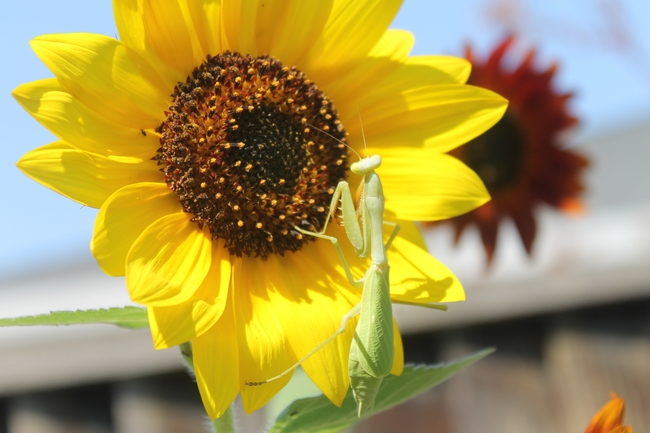Summer has arrived, bringing with it busier days and rising temperatures. Managing irrigation is quickly becoming the most critical task in the garden as the heat increases.

Here is a list of gardening activities to focus on this June:
- Plant Warm-Season Crops: In many parts of the state you can still plant certain warm-season crops such as beans, corn, cucumbers, pumpkins (start now for Halloween), and summer squash. These warm-season plants require substantial irrigation, so plan accordingly. Plant only as many as you can consistently water throughout the summer.
- Stake Tomatoes: Stake or cage tomato plants so they do not lay on the ground. This reduces fruit rots, makes pest management more manageable, and ensures harvesting later in the season is easy. Mulch your tomato plants to conserve soil moisture.
- Mulch: June is ideal for mulching the garden. Mulch adds a decorative touch and reduces water evaporation from the soil. It also helps control weeds, moderates soil temperature, and improves soil fertility. Maintain a 3-to 4-inch mulch depth, keeping it at least 6 inches away from the base of woody plants like trees and shrubs to prevent potentially fatal fungal growth.
- Check Watering Schedule: Regularly check soil moisture and adjust your watering habits or the schedule on your irrigation controller accordingly. Water early in the coolest part of the day to maximize water absorption through plant roots and minimize evaporation.
- Deadhead Flowers: Once you have spent flowers, deadhead roses and other summer-blooming plants to encourage continued blooming. Cut blossoms for bouquets early in the morning, as they stay fresh longer if quickly placed in a vase of water. Keep an old can or jar with water handy as you cut your stems.
- Manage Aphids: Be vigilant for any remaining aphid colonies and spray them off with water early in the day before high temperatures. This allows plants to dry quickly in the sun, reducing susceptibility to fungal diseases. Repeat applications over several days until the aphids are gone.
- Trellis Plants: Train your plants to trellises or supports as they grow. Avoid handling plants when wet from dew in the morning, as this can spread disease. Make sure the trellis you choose can handle the weight of your plant or is secured to another structure that can.
- Fire-Safe Landscaping: Implement fire-safe landscaping by following these steps:
- LEAN: Thin out dense vegetation and eliminate fuel ladders that allow fire to climb up trees.
- CLEAN: Mow grasses, trim shrubs, and remove dry, resinous, dead plants and flammable debris. Cut branches back 15 to 20 feet from buildings. Use non-combustible surfaces for walkways, patios, and driveways.
- GREEN: Landscape using low-growing, non-woody plants.
- Protect Fruit Trees: Cover fruit trees with netting to exclude birds and other vertebrate pests.
- Prune Citrus: Remove suckers at the base of citrus trees. Suckers that arise below the graft union are part of the rootstock plant. They are vigorous shoots that take water and nutrients from the rest of the plant and negatively impact your harvest. In addition to suckers, remove water sprouts, and low-hanging branches that could interfere with sprinklers or allow pests to climb into the trees.
- Enjoy Your Garden: Harvest and savor the fruits of your labor!
Following these June Garden Tips can ensure a healthy and productive garden throughout the summer.
Ask your local UC Master Gardener Program.
Have a gardening question? UC Master Gardener volunteers are available to help. Click here to Find a Program and connect with your local UC Master Gardener Program. You will be redirected to your local county website and contact information. UC Master Gardener volunteers are available to help answer questions for FREE. Happy gardening!